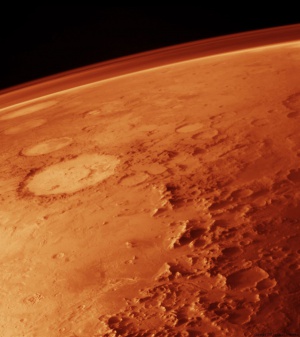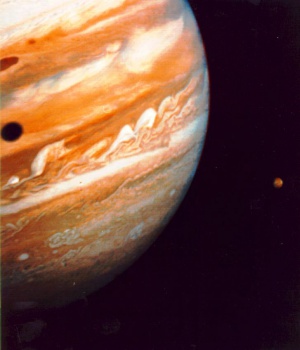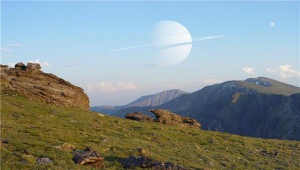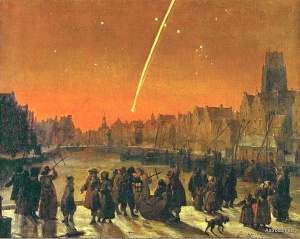Difference between revisions of "Planets"
Daniel Leech (talk | contribs) |
Daniel Leech (talk | contribs) |
||
| Line 2: | Line 2: | ||
This page is for the Planets in the known universe. For Human civilization ''(usually found on Planets)'' see [[Humanoid_lifeforms_in_the_known_universe|Humanoid lifeforms in the known universe]]. The page encompasses '''Universes''', '''Galaxies''', '''Stars''', '''Comets''', '''Dimensions''' etc, to illustrate the '''Planets''' relationship to the rest of the universe. | This page is for the Planets in the known universe. For Human civilization ''(usually found on Planets)'' see [[Humanoid_lifeforms_in_the_known_universe|Humanoid lifeforms in the known universe]]. The page encompasses '''Universes''', '''Galaxies''', '''Stars''', '''Comets''', '''Dimensions''' etc, to illustrate the '''Planets''' relationship to the rest of the universe. | ||
| − | There are numerous discussions regarding various different '''planets''' in the [[contact reports]]. As well as specific information about what constitutes a planet, the stages of developmental evolution of life on any given planet, planets of our past like [[Malona]] as well as our future. Planet-Planets, Planets in other star systems, like the [[Lesa Star System]], Planets in time shifted dimensions like [[Erra]], in past galaxies, the [[Lyren_galaxy|Lyren]] galaxy and of course in our own times galaxy the [[Milky_Way|Milky way]] (as [[Earth]] people have designated it), other galaxies such as the [[Nepon Galaxy]] and even other universes. Like our own [[DERN Universe|DERN]] universes slightly younger twin the [[DAL Universe|DAL]] where [[Akon]] is said to be. | + | There are numerous discussions regarding various different '''planets''' in the [[contact reports]]. As well as specific information about what constitutes a planet, the stages of developmental evolution of life on any given planet, planets of our past like [[Malona]] as well as our future. Planet-Planets<ref>[[Contact_Report_228]] lines 98.</ref>, Planets in other star systems, like the [[Lesa Star System]], Planets in time shifted dimensions like [[Erra]], in past galaxies, the [[Lyren_galaxy|Lyren]] galaxy and of course in our own times galaxy the [[Milky_Way|Milky way]] (as [[Earth]] people have designated it), other galaxies such as the [[Nepon Galaxy]] and even other universes. Like our own [[DERN Universe|DERN]] universes slightly younger twin the [[DAL Universe|DAL]] where [[Akon]] is said to be. |
Revision as of 06:34, 18 February 2014
This page is for the Planets in the known universe. For Human civilization (usually found on Planets) see Humanoid lifeforms in the known universe. The page encompasses Universes, Galaxies, Stars, Comets, Dimensions etc, to illustrate the Planets relationship to the rest of the universe.
There are numerous discussions regarding various different planets in the contact reports. As well as specific information about what constitutes a planet, the stages of developmental evolution of life on any given planet, planets of our past like Malona as well as our future. Planet-Planets[1], Planets in other star systems, like the Lesa Star System, Planets in time shifted dimensions like Erra, in past galaxies, the Lyren galaxy and of course in our own times galaxy the Milky way (as Earth people have designated it), other galaxies such as the Nepon Galaxy and even other universes. Like our own DERN universes slightly younger twin the DAL where Akon is said to be.
List of planets
| Sol star system |
| Inner Planets |
- Vulcan/Volkano A big comet, or a small planet, which is not in a position to bear human life because its orbit is the closest to the sun. It played a role in ancient cultures such as Akkadia, Babylon and in Sumer. Limited information was offered in FIGU Bulletin 009.
- Skill in the 238th contact, 18th May, 1991, Ptaah told Billy that a planet where todays Venus has its orbit, collided with the Destroyer planet/comet hurtling it into the sun. It was 6,100 kilometres in diameter. Skill was the original second planet in the Sol star system and therefore likely developed a more befitting/suitable elliptical orbit than that of the present day Venus nor an anti-clockwise (retrograde) rotation once every 243 Earth days, additionally having its own natural satellite (moon).[2][3]
- Venus in contact 31 is flown past in a beamship when Billy jokes about photographing a Venusian, which spurs a conversation about fraudulent contactees, because no one lives there. Its another desolate and uninhabitable planet.[4] Venus was formatively a planet-planet of Uranus having been torn from its orbit by the Destroyer planet/comet in 6,339.5 BCE.[5]
- Earth also named Terra[6]. In the Sol star system, the planet we think we know well.
- Malona also called Malon[7], Phaeton[8], and Planet V by modern theorists[9]. Is mentioned by Semjase in contact 4 and yet again in contact 251 where its explained how it was destroyed in the distant past of the Sol star system. Its current existence now constituting smaller and larger pieces forming the asteroid belt.[10][11]
- Mars is now a desolate and uninhabitable planet[12] but it was not always this way. Its explained in contact 251 how "masses of diverse races found refuge on the planets Mars and Malona/Phaeton, where they constructed cities, pyramids, stations and other things. They led a good life on Mars until the planet become uninhabitable through cosmic influences. The Destroyer penetrated the Martian orbit and wrenched Mars with it into another SOL orbit, namely that of Malona, where it remained. Subsequently, Malona drifted away, however, because of the Destroyer's powerful forces, but managed to exist in this orbit until the time when it was destroyed by its inhabitants many millennia later, and became the Asteroid Belt. During this "drifting catastrophe", the inhabitants of Malona were decimated from approximately 470 million humans to barely 14 million; however, they were able to recover somewhat and by the time they destroyed their planet, their population had increased again to approximately 52 million.[13]
- Asteroid belt is here between Mars and Jupiter in the current time. Its occupied by numerous irregularly shaped bodies called asteroids or minor planets.[14] But only because Malona was manoeuvred into this position by a horrendously powerful repulsion effect before its final destructive sequence of events.[15] Computer simulations suggest that the original asteroid belt may have contained mass equivalent to the Earth. The current asteroid belt is believed to contain only a small fraction of the mass of the primordial belt. Primarily because of gravitational perturbations, most of the material was ejected from the belt believed to be within about a million years of formation,[16] leaving behind less than 0.1% of the original mass. In 2006 it was announced that a population of comets had been discovered within the asteroid belt beyond the snow line, which may have provided a source of water for Earth's oceans. According to some models, there was insufficient outgassing of water during the Earth's formative period to form the oceans, requiring an external source such as a cometary bombardment.[17][18][19]
| Outer Planets |
- Jupiter is mentioned in Contact report 39, 115, 182, 228, 251, FIGU Bulletin 4, 5, 6, 7, 8, 9 and 11.
- Kathein is discussed in contact 228, contact 223 and FIGU Bulletin 009 as a planet in the Sol star system but which remains hidden from the perspective of earth due to its orbit residing beyond the sun, behind the sun from our perspective. Travelling at a tremendous velocity having been freed from the Destroyer Planet's field of force during its tenth to last passage through our star system. Its uninhabited and will drift out of the Sol star system in the future (may have already occurred in fact).
- UNI/Nibiru/Nubiru (Transpluto comet) is mentioned in FIGU Bulletin 009, FIGU Bulletin 010 and briefly by Quetzal in contact 228. An uncommonly big comet, which has an orbital period around the solar system of around 3,600 years. The comet is not in a position to bear human life. That which emerges from old texts regarding the Annunaki and the planet Niburu is based on mythological facts as well as beliefs, misguidance and erroneous assumptions. Also see Comets.
| Plejaren Federation |
- Erra is the home-world of Ptaah, Quetzal, Semjase, Sfath and 550,000,000 others. A world of the Plejaren Federation located in the Tayget, Plejara or Plejares star system. Under the leadership of the Andromedan High Council.
- Askal is another inhabited planet of the Tayget, Plejares or Plejara star system. Sudor of Askal from this world has previously contacted Billy according to the Contact Statistics.
- Luseta is another inhabited planet of the Tayget, Plejares or Plejara star system. Nefratisa is a Lusetan from this world contacted Billy on at least 26th June 2001 according to the Contact Statistics.
- Timar is a planet in the Akon star system in the DAL Universe. Asket and Nera are from this world. The Timmar are 'possibly' members of the Plejaren Federation.
- Deron resides in the Wega star system and they are members of the Plejaren Federation.
- Druan a planet in the Nol star system where the Druan are said to live. They are also members of the Plejaren Federation.
- Njsan a planet in the Lyra star system where the Njsan reside and are members of the Plejaren Federation.
- Sater also in the Lyra star system and members of the Plejaren Federation.
- Bardan 1, 2 and 3. The People's Union of Bardan is located in the Coma Galaxy and are recently new members of the Plejaren Federation. One of their ships self-destructed in Russia, Earth on 30th June 1908, which came to later be known as the Tunguska event.[20][21]
| Other Worlds |
- Sadr is explained in contact 238 as a world in the Waron star system and birthplace of Nokodemion.
- Deneb is a planet in a star system in what we call the constellation Cygnus. Denebians resemble a half-human, half-frog humanoid form with fingers twice the length of a humans.[22] Asina whom Billy met twice is a Denebian.
- Desom is in the Asap galaxy and is inhabited by humans at a stage of evolution similar to Earths Middle Ages time period. The star in the system is a giant sun. Desoms moon is four times larger than Earths moon. This moon will rush into the systems giant star in 3200 years time. Billy in the Plejaren Great Spacer visited this planet on 16th September 1975.
- Saban A planet 2.1 million light years distance from Sol where a splinter group from The Bafath had a base of operations until 1982 when they were arrested by Plejaren forces.
- Kartag A planet in the Neb Star System in the Aratom Galaxy. Visited by Billy and the Plejaren on 16th Sept, 1975. The planet is inhabited by humans at a similar stage of development to that of Earth humans. The inhabitants were destroying one another with nuclear weapons. They use aircraft similar to beamships. The system was under the control at the time of the visit by a highly developed form of life, which intervened to prevent an extra-planetary catastrophe. The inhabitants adhered to the advice and were thus saved from total self-annihilation.[23]
- Nissan is in the neighbourhood of Lasan in the Lyra star system. The Chinese and Japanese races on Earth emigrated to this star system 2,400,000 years ago. 25,978 years ago they again emigrated from planet Nissan to Earth, consequently making them the youngest immigrants to Earth of today.[24][25]
- Kudra in the Nisan star system. Is where The Chinese and Japanese races on Earth were originally created before they emigrated 2,400,000 years ago to planet Nissan.[26]
- Akart is discussed in contact 35 and later in contact 481. It was a planet 5 light years distance from Earth that was inhabited by over 23,000,000,000 humans. They were capable of space travel and visited Earth often to collect fruits, grains and vegetables to set out and grow on their overpopulated planet. Atleast, this was the case until the planet suffered an 'oxygen collapse' or 'atmospheric collapse' as explained in contact 481, whereby the excessively overpopulated, therefore mismanaged, world developed a CO2 concentration which caused a widespread destruction of life. Also see Climate Change on earth for a comparison of culminating factors.
| Comets |
- Destroyer planet/comet last flew past in 1680 making it "The Great Comet of 1680", the first comet discovered by telescope.[27] Its been the cause of many problems in the Sol star system over a long period of time, but has now been removed by the Plejaren (Also see Comets). The wandering Planet, or Comet by definition, has disturbed at least; Venus, Earth, Mars, Malona, Uranus, Neptune, at one time or another. Contact Report 150 states its volume to be 1.72 times that of the Earth though its weight has been reduced to an average mass of that of the Earth. It rotated at a velocity of 314.7 m/s at the equator compared to the Earth's 465 m/s.
Further Reading
- Planetary Oxygen Collapse
- Climate Change
- Humanoid lifeforms in the known universe
- Hostile Alien Lifeforms
- How did our universe and our world come into existence
References
- ↑ Contact_Report_228 lines 98.
- ↑ http://forum.figu.org/us/messages/863/3279.html#
- ↑ Venus
- ↑ http://en.wikipedia.org/wiki/Venus
- ↑ Contact Report 150
- ↑ http://www.futureofmankind.co.uk/Billy_Meier/Contact_Report_117
- ↑ Contact Report 155
- ↑ http://en.wikipedia.org/wiki/Phaeton_(hypothetical_planet)
- ↑ http://en.wikipedia.org/wiki/Planet_V
- ↑ http://en.wikipedia.org/wiki/Asteroid_belt
- ↑ http://en.wikipedia.org/wiki/Planet_V
- ↑ http://en.wikipedia.org/wiki/Mars
- ↑ Contact Report 251
- ↑ http://en.wikipedia.org/wiki/Minor_planet
- ↑ Contact Report 251
- ↑ http://www.gps.caltech.edu/classes/ge133/reading/asteroids.pdf
- ↑ http://www.planetary.org/blog/article/00000551/
- ↑ http://en.wikipedia.org/wiki/Asteroid_belt
- ↑ http://en.wikipedia.org/wiki/Planet_V
- ↑ FIGU Bulletin 59
- ↑ The Asket Contact Reports
- ↑ Christian Frehner, UFO Conference 2006, Laughlin, Nevada
- ↑ UFO...Contact From The Pleiades
- ↑ Contact Report 236
- ↑ Attacking questions from Japan... (FIGU booklet)
- ↑ Contact Report 236
- ↑ http://en.wikipedia.org/wiki/C/1680_V1



